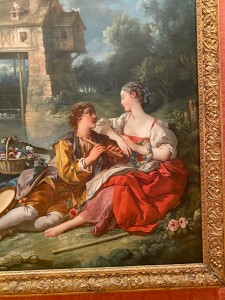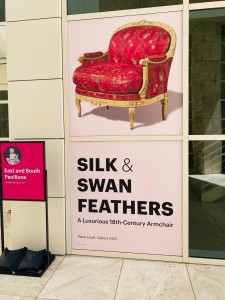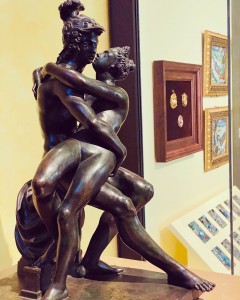Cultural Cocktail Hour
Hope Springs Eternal: An Afternoon at the Getty Center which opens May 25th!
Just What the Art Doctor Ordered:
The Getty Center reopens on May 25th!
by
Leticia Marie Sanchez
(Below, Ariadne Discovers Theseus’ Departure, 1493). Artist: Master of the Chronique Scandaleuse)
Nothing can replace seeing a work of art in person. The reopening of the Getty Center on May 25th will be a welcome relief for Angelenos suffering from art withdrawal. Walking through the galleries during the press preview was like a long-awaited reunion with an old friend.A testament to the value of an Encyclopedic museum, my meandering through the Getty Center proved the breadth of offerings for everyone. From the breezy Rococo exhibit on “Silk and Swan Feathers,” to the provocative ”Power, Justice, and Tyranny” in the Middle Ages, one can choose how to spend one’s venture back into the museum.
If one is looking for a light-hearted escape from the surreal year behind us, a foray into French furniture can do the trick, as one can admire a luxurious 18th century armchair in the context of other Rococo treasures, like Boucher’s “Fountain of Love.”Below. Detail from Boucher’s “Fountain of Love” 1748. Oil of Canvas.
On the other hand, the exhibit on the Middle Ages sheds light on serious subjects like sexual assault and how these social issues were handled by a hypocritical power structure. Here, the illuminated manuscripts illuminate us on medieval times, not glossing over historical realities.



(Above, Carrie Mae Weems, After Manet, 2003, Chromogenic Print)
The Getty Center is a juxtaposition of past and present. One piece that struck me with this juxtaposition was in the exhibit “Photo Flux,” This exhibit empowers agency in previously marginalized artists and subjects. The powerful gaze of the young sitter in Carrie Mae Weems’ “After Manet,” plays with the concept of who is the viewer, and who is being viewed, transfering power to the unflinching subject herself.
The unexpected pièce de résistance of this visit was the permanent collection itself and becoming reacquainted with marvels like Hans Mont’s Venus and Mars (1575), placed so unobtrusively that only a unrushed, socially distant walk brought it to my attention.
(Below, Mars And Venus, About 1575, Attributed to Hans Mont, Bronze)
Venus Mars
To cap off the afternoon, I strolled in the beauty of the Getty Center gardens. A moment of blissful repose from a surreal fourteen months called to mind the words of Alexander Pope: “Hope Springs Eternal.”















